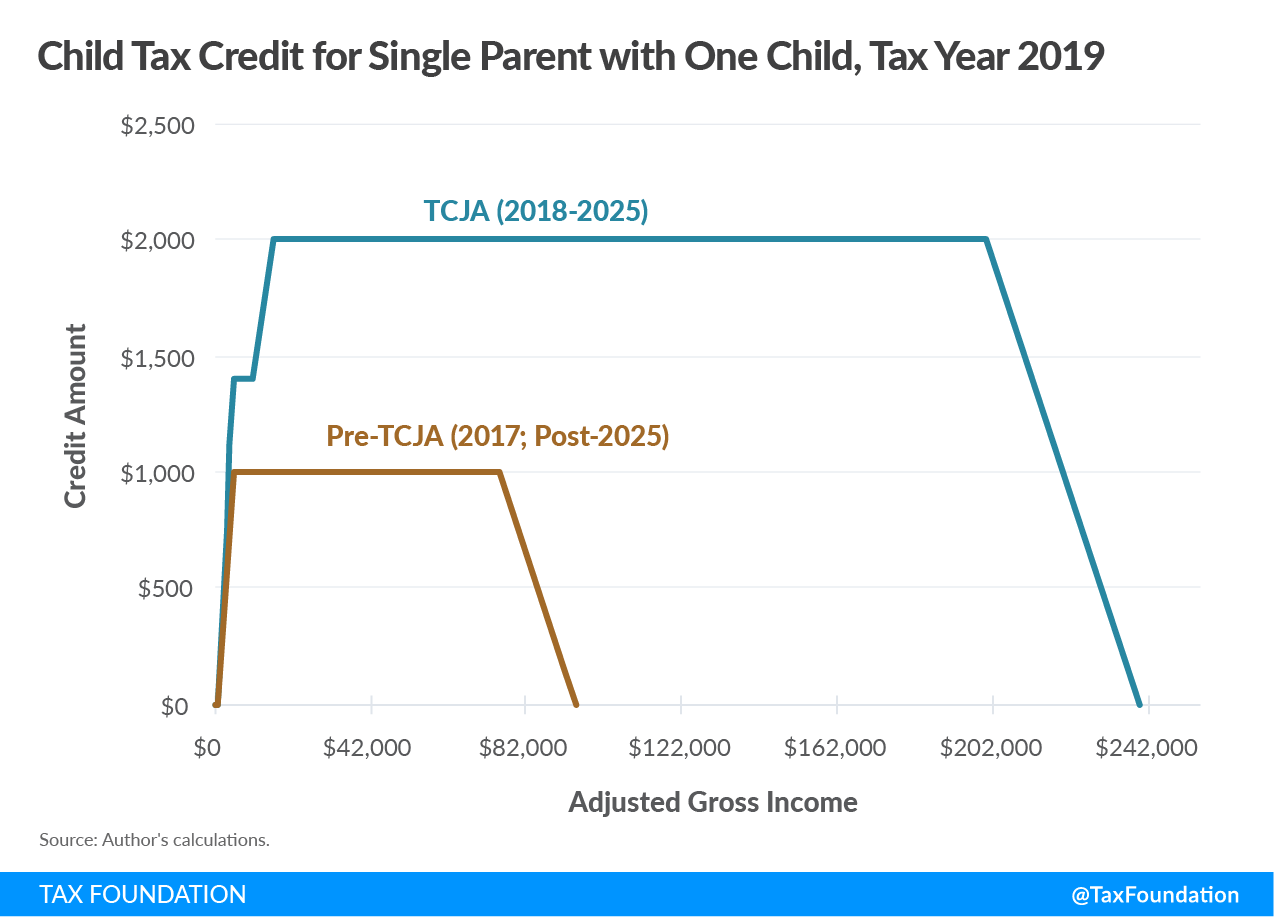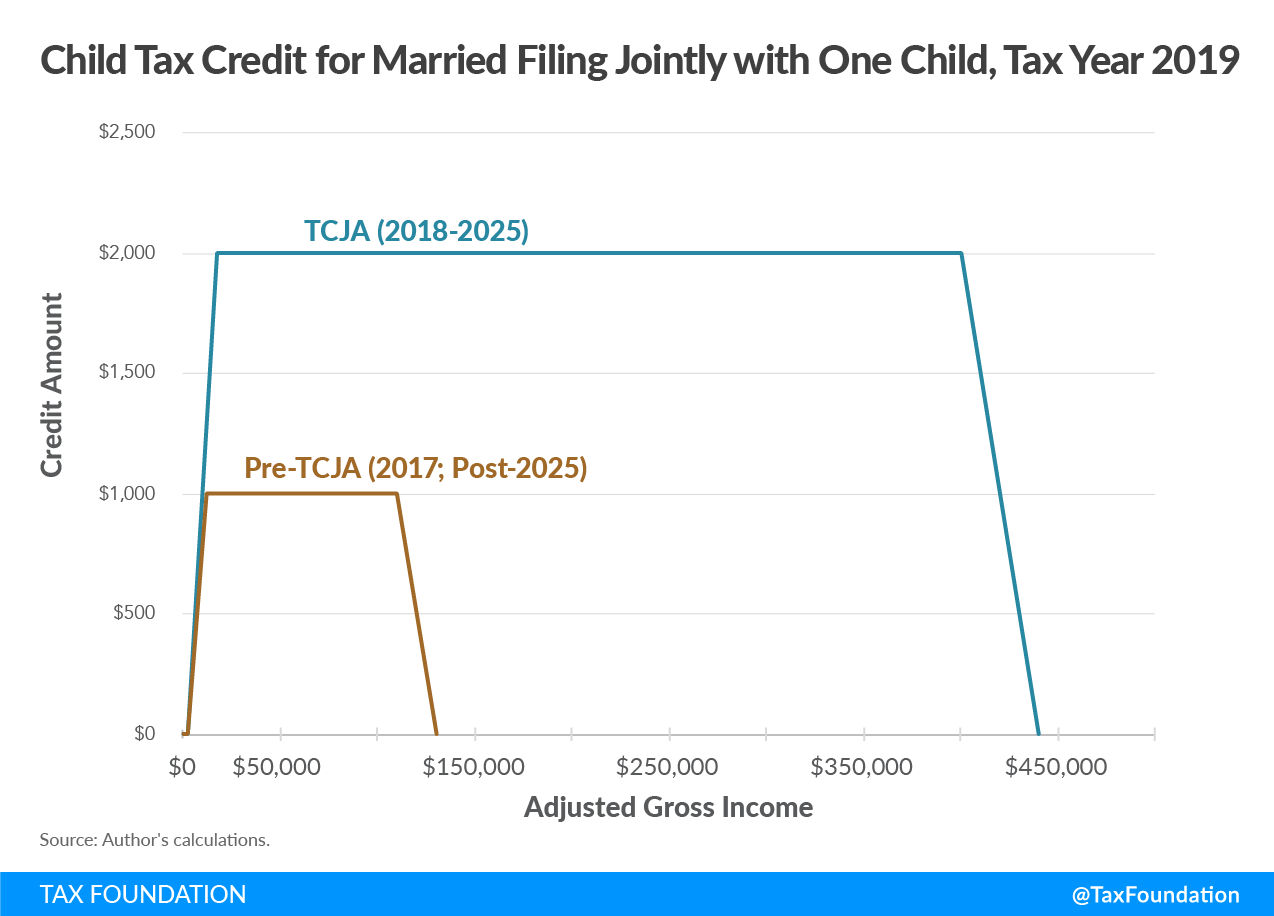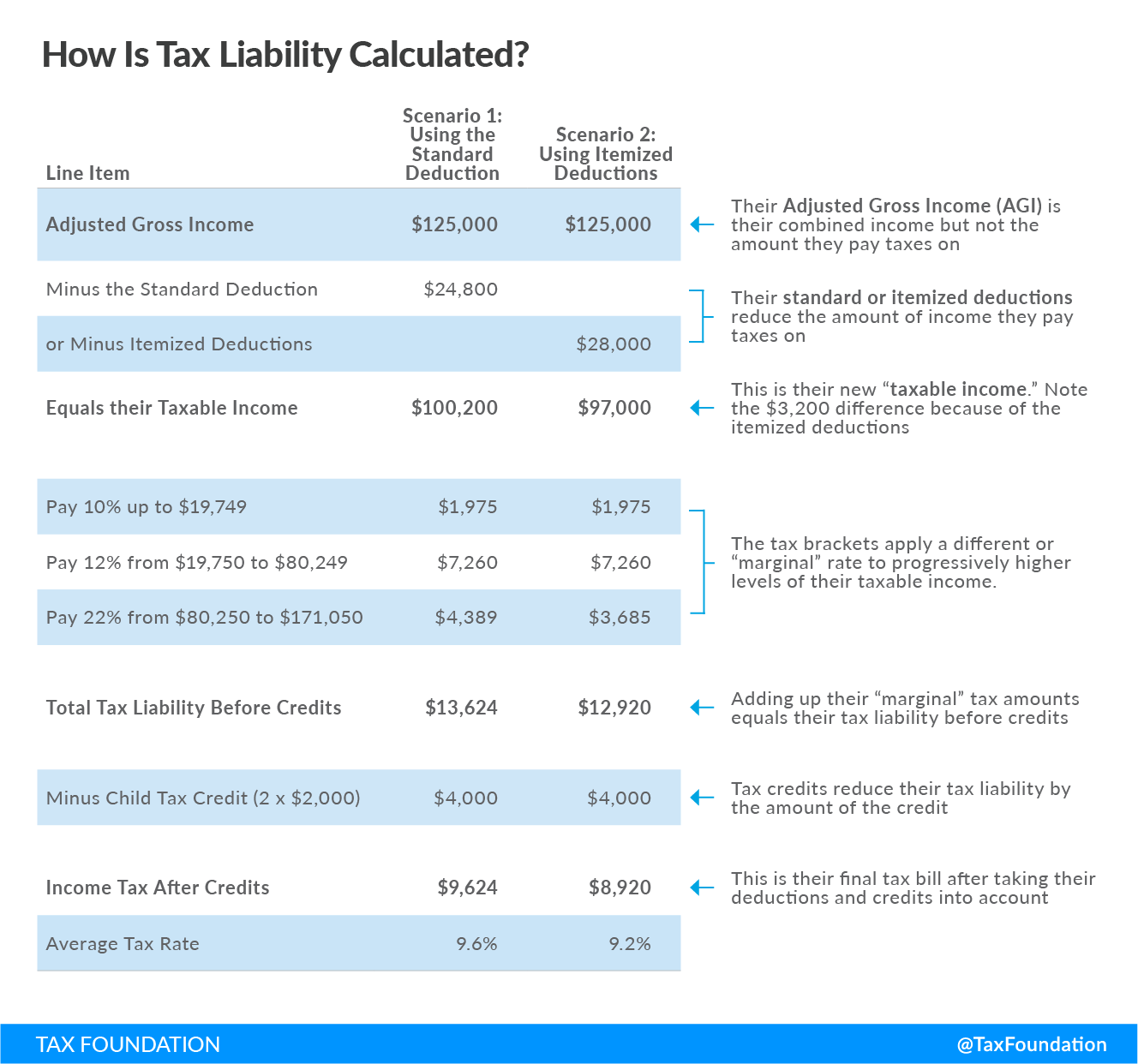The federal child tax credit (CTC) is a partially refundable credit that allows low- and moderate-income families to reduce their tax liability dollar-for-dollar by up to $2,000 for each qualifying child. The credit phases out depending on the modified adjusted gross income amounts for single filers or joint filers.
How Does It Work?
The value of the child tax credit (CTC) is 15 percent of a household’s adjusted gross income (AGI) above the first $2,500 of earnings until the credit reaches its maximum at $2,000 per child. Up to $1,400 of the credit is refundable as the Additional Child Tax Credit [ACTC], meaning the taxpayer can receive a refund of up to $1,400 even if they don’t owe any tax. The credit is reduced by 5 percent after adjusted gross income reaches $200,000 for single parents and $400,000 for married couples. Additionally, there is a $500 non-refundable credit for non-child tax credit dependents.
For a taxpayer to qualify for the credit, any children must meet several criteria: age, relationship, support, dependent, citizenship, and residence. The child must be under age 17, biologically-related to and claimed as a dependent by the taxpayer applying for the credit, not provide more than 50 percent of their own financial support, be a U.S. citizen, U.S. national, or U.S. resident alien, and have lived with the taxpayer for more than half of the preceding calendar year. (Step-children and foster children may qualify if they meet certain requirements.) The Tax Cuts and Jobs Act (TCJA) also added a requirement that parents be able to verify a valid Social Security Number (SSN) for each eligible dependent.
History of the Child Tax Credit
The child tax credit was originally a non-refundable $500 per-child credit enacted as part of the Taxpayer Relief Act of 1997. The credit was increased to $1,000 and made partially refundable under the Economic Growth and Tax Relief Reconciliation Act of 2001. Most recently, the Tax Cuts and Jobs Act of 2017 increased the maximum amount of the credit from $1,000 to $2,000, expanded the refundable portion of the credit to $1,400, raised the income threshold phaseouts from $75,000/$110,000 (single/married) to $200,000/$400,000, and lowered the refundability threshold from $3,000 to $2,500. Unless Congress acts, these changes will expire at the end of 2025.
Stay updated on the latest educational resources.
Level-up your tax knowledge with free educational resources—primers, glossary terms, videos, and more—delivered monthly.
Subscribe


